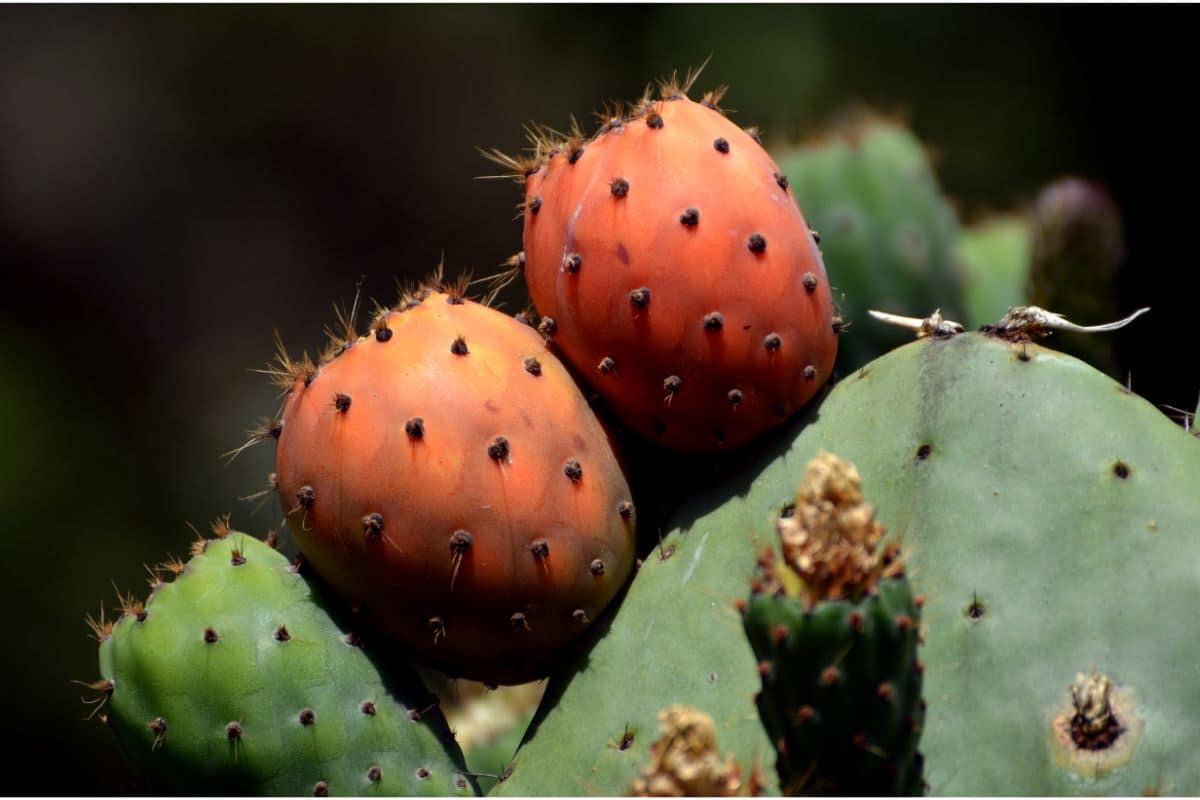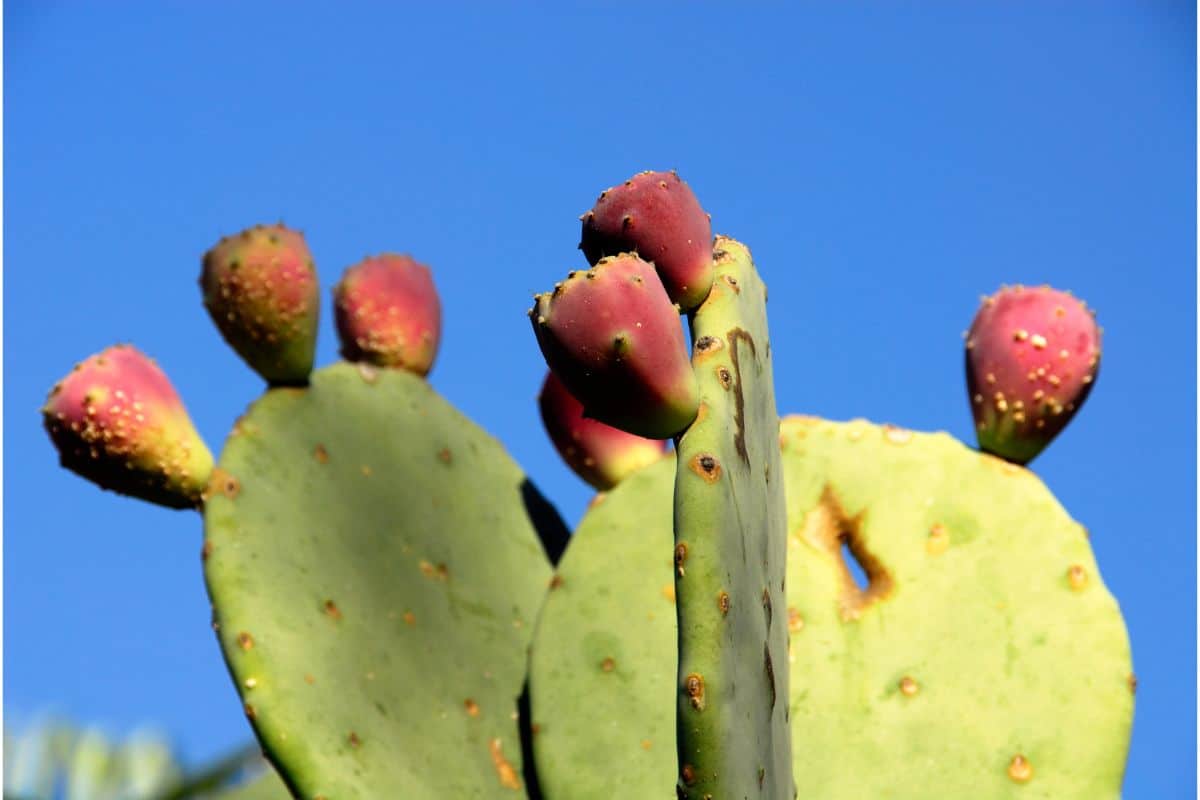Mention the Tuna fruit to many, and they will immediately imagine a swimming fruit-like fish (well, that’s what we imagined). However, the tuna fruit has nothing to do with our aquatic friends.

Tuna fruit is a term used to describe the fruit of certain cactus species. This peculiar fruit is native to arid regions, particularly in Mexico and parts of the Americas.
These fruits grow on cacti known as Opuntia or prickly pear cacti, which are characterized by their flat, paddle-shaped stems adorned with spines.
The tuna fruit itself is a vibrant and enticing sight, often displaying shades of red, orange, or yellow when fully ripe.
Its exterior is covered in tiny spines, which require careful handling to avoid getting pricked. Once the spines are removed, the juicy and succulent flesh of the tuna can be enjoyed.
Pear-shaped, supremely delicious, and refreshing, the tuna fruit can be enjoyed on its own, or it goes wonderfully with desserts, salads, smoothies, and much more.
Want to learn more about this unique fruit? Join us as we delve into what the tuna fruit is, its origins, its health benefits, and more.
Tuna Fruit – Explained
A tuna fruit is a pear-shaped, red fruit that grows in cactus paddles and is covered in a thick skin with small spines.
When cut open, the tuna fruit’s flesh is extremely soft and juicy. Inside are also small dark, round seeds which are edible, like the flesh of the fruit.
A tuna fruit has a high nutritional value, leading many to conclude that it is in fact a superfood. We will go into its potential health benefits below!
Tuna fruit cactus are found throughout much of South America, but it is believed to be native to Mexico.
Today, it grows wild in very dry regions across the globe, but it is also cultivated for farming, too.
The fruit has a subtly sweet flavor that is reminiscent of a cross between watermelons and pears. Its refreshing, tropical taste is a welcome treat for those in arid, hot climates.
It can be eaten fresh, used in desserts, or turned into various culinary creations such as jams, jellies, and even beverages.
This intriguing fruit holds a unique place in traditional cuisines and continues to captivate adventurous food enthusiasts worldwide.
And, here’s a fun fact – all cactus fruits are called “tunas” in Spanish. Historians believe that the prickly fruit got its name “tuna” from a Nahuatl word in the Aztec language.
It’s truly fascinating to see how the term has been adopted and used across different cultures to refer to this delicious and vibrant fruit.
So, the next time you enjoy a tuna fruit, remember its ancient roots and the rich linguistic history behind its name!
Tuna Fruit – Health Benefits

As we mentioned, a tuna fruit is considered a super food by many. Not only do people enjoy its juicy, refreshing taste, but they also enjoy its many health benefits.
It is loaded with vitamins, minerals, fiber, and antioxidants, as well as magnesium, potassium, calcium oxalate, iron, phytonutrients, and many more nutrients.
Some of its health benefits include:
- Aids indigestion – Tuna fruit is a good source of dietary fiber, which aids in proper digestion and helps prevent constipation. The fiber content also helps regulate blood sugar levels and promotes a feeling of fullness.
- Controls weight – Some studies have found that tuna fruit can help you get closer to your weight loss goals, thanks to its high dietary fiber content. It was found that tuna fruit reduces body fat, cholesterol levels, and blood pressure, to boost overall health.
- Improves heart health – Because tuna fruit is low in saturated fat and cholesterol, it is considered a heart-healthy choice. Its potassium content may also help lower blood pressure and reduce the risk of cardiovascular diseases.
- Protects against inflammation – Some studies suggest that the compounds found in tuna fruit may possess anti-inflammatory properties, which can help reduce inflammation in the body and potentially benefit conditions such as arthritis.
These are just some of the potential health benefits associated with the consumption of tuna fruit in a balanced diet.
How to Prepare and Use Tuna Fruit
It is essential you prepare tuna fruit properly before eating it. Firstly, look for tuna fruit that has a reddish-purple or pink skin. These are the ripest of all.
Once you have your tuna fruit, start by cutting its top and bottom parts off. Then, slice it in half lengthwise.
Take out the seeds with a spoon to discard them. Cut the fruit into small cubes to enjoy raw or cook them in different dishes and drinks, such as salads, smoothies, jams, teas, and jellies. You can also make juice out of it.
Always wash the fruit before use to remove any pesticides or dirt on its surface. Then, enjoy!
In Summary
It’s true, tuna fruits don’t taste like fish! Instead, they are juicy, super refreshing, and versatile. Try one today and we’re sure you’ll love it!






